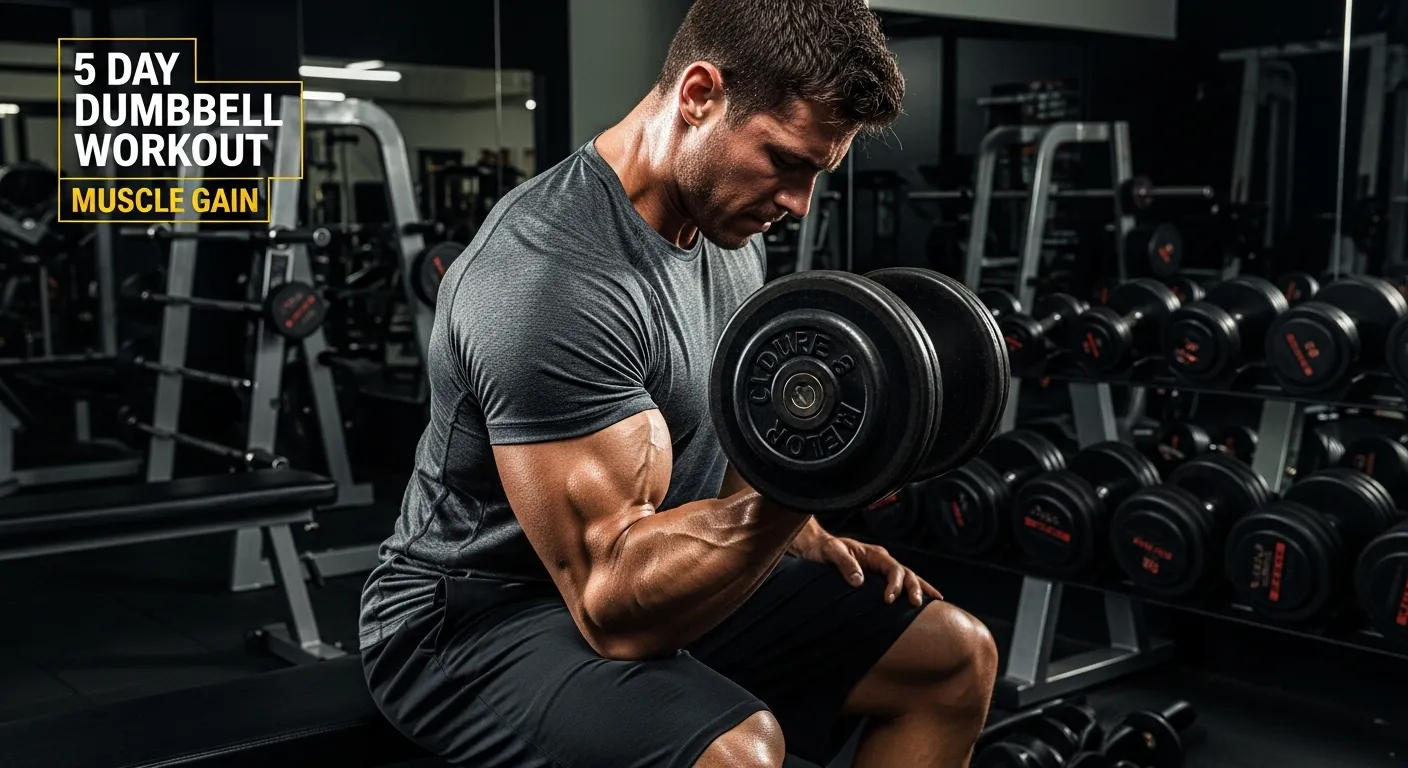How to Do a Dumbbell Shoulder Press Safely

If you’ve ever hit the gym and seen someone pressing dumbbells overhead, that’s the dumbbell shoulder press. It looks simple enough, grab weights, lift them and call it a day. But it’s not that simple. Shoulder press exercises are all about form, control, and understanding how your body moves. Mess that up, and you’ll feel it the wrong way. I’ve seen people injure their rotator cuffs just because they didn’t respect the movement.
Why the Shoulder Press Matters
Your shoulders are a big deal. They stabilize almost everything you do in upper-body workouts. The shoulder press exercise builds strength in the delts, triceps, and upper chest. It gives your upper body that solid, balanced look. Whether it’s the seated shoulder press or standing dumbbell shoulder press, this move works.
But it’s not about lifting heavy. It’s about lifting smart. The goal here is safe, strong progress, not just showing off at the mirror.

Understanding What a Shoulder Press Really Is
So, what is a shoulder press? Basically, you are elevating weights overhead in a single movement. This assists the growth of the Muscles of the Shoulder, the triceps, and the core, too if your position is standing, as it is a multi-muscle one. Variations exist, for example:
| Variation | Position | Focus Area |
|---|---|---|
| Seated DB Shoulder Press | Sitting upright | Pure shoulder focus, more stability |
| Standing Dumbbell Press | Standing | Involves core, balance, and stability |
| Incline Dumbbell Press | Slight incline bench | Targets upper chest and front delts |
| Decline Dumbbell Press | Declined bench | Shifts load to lower chest |
| Flat Dumbbell Press | Flat bench | Mix of chest and shoulder |
Each version has its place. But for shoulder strength and shape, the classic dumbbell shoulder press and dumbbell overhead press standing versions are unbeatable.
How to Do a Dumbbell Shoulder Press Safely
Alright, let’s break it down like you’re learning it for the first time.
- Set up right: Sit on a bench with back support. Feet flat and core tight.
- Grab your dumbbells: Lift them to shoulder level. Palms facing forward.
- Press upward: Push until your arms are just short of locking out.
- Lower slowly: Control the descent. Don’t drop the weights.
That’s one rep. Sounds easy, but the trick is keeping your elbows under the wrists. Don’t flare them out wide. That’s how shoulders get cranky.
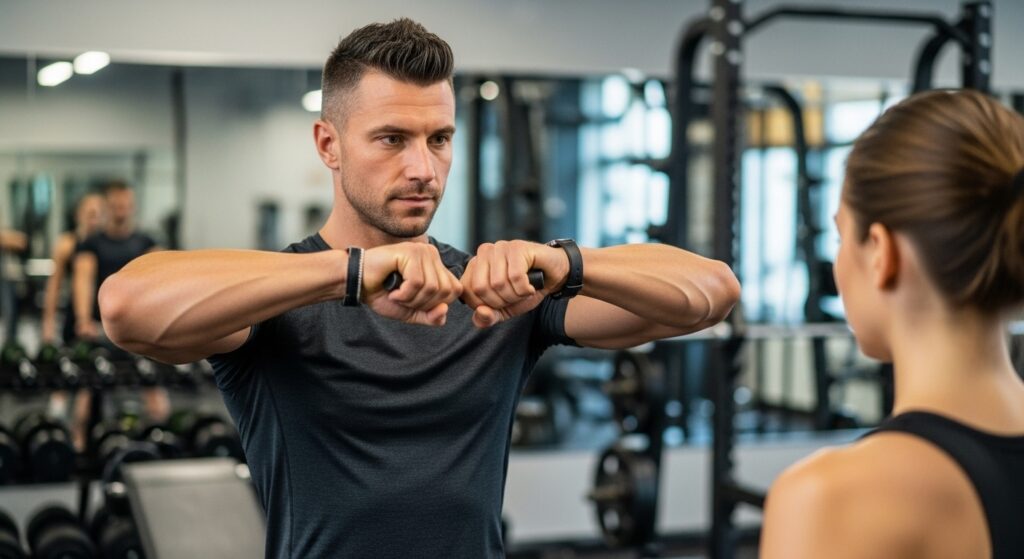
Standing vs. Seated Dumbbell Shoulder Press
Both versions are great. It depends on what you want.
- Seated db shoulder press: keeps your body stable. You can lift heavier, focus on form.
- Standing dumbbell press: brings your core into play. It’s a bit harder because you need balance.
When I coach beginners, I start them seated. Once their form locks in, we go standing. Simple rule, don’t rush.
Common Form Mistakes (and How to Fix Them)
You’d be surprised how many people mess this up. Here are the top ones I’ve seen:
- Arching the back: If you lean too far, you’ll strain your spine. Keep your core tight.
- Locking elbows: Never slam your joints at the top. Control it.
- Uneven lifts: One side rising faster? Lower your weight. You’re not balanced yet.
- Wrong range: Dropping the dumbbells too low puts stress on the shoulders. Stop when elbows are just below shoulder height.
Form first. Always.
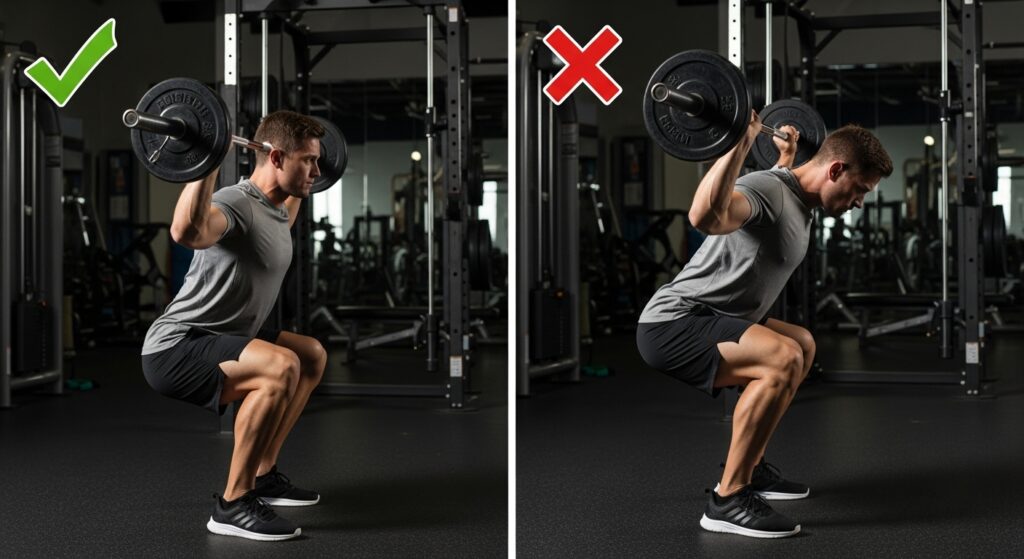
Muscles Worked in a Dumbbell Shoulder Press
Here’s what gets fired up during the movement:
| Muscle Group | Function |
|---|---|
| Deltoids | Main movers, especially the front and middle heads |
| Triceps | Assist in extending arms overhead |
| Upper Pecs | Secondary stabilizers |
| Core | Keeps the body stable during lift |
| Traps | Help maintain shoulder position |
That’s why this one exercise covers so much ground in your shoulder press workout. It’s efficient.
How Heavy Should You Go?
If you can’t control the movement, you’re too heavy. I tell people, lift what you can press cleanly for 8 to 12 reps. Once you can do 12 easily, go up a notch. But small jumps. Don’t skip 5 kg at once.
If your lower back starts working more than your shoulders, drop the weight. It’s not worth it. Remember, muscles grow from control and tension, not ego.
Breathing Technique
It’s simple but ignored. Inhale while lowering the dumbbells. Exhale as you press up. Holding your breath makes you tense and unstable. Control your breathing, and your lift becomes smoother.
Seated vs. Standing: Which Builds More Strength?
Honestly, both. But they hit slightly different angles. The standing shoulder dumbbell press hits your stabilizers and core harder.
The seated db shoulder press isolates your shoulders better. If you’re training for aesthetics, seated is solid. For functional strength, standing wins.
Shoulder Press Dumbbell vs. Military Press Dumbbell
People mix them up a lot. The military press dumbbell is stricter. Feet together. No leaning, no arch. The shoulder press dumbbell gives a bit more freedom. You can adjust your stance and range slightly.
Both are great, but the military version builds strict power.
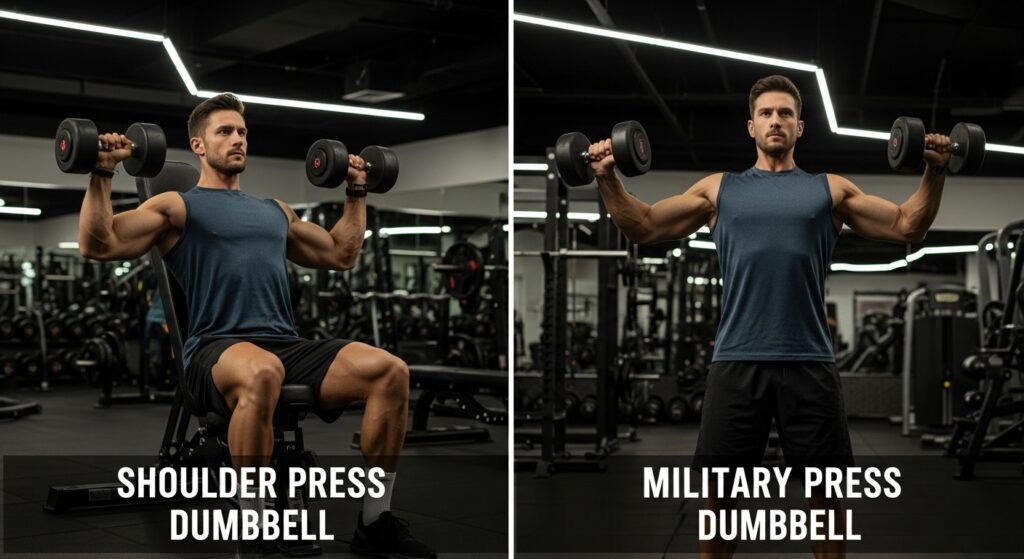
When to Do Shoulder Presses in Your Workout
Usually after your main chest work or before isolation moves. Here’s a good upper body split idea:
| Exercise | Sets | Reps |
|---|---|---|
| Incline Dumbbell Press | 3 | 8 to 10 |
| Flat Dumbbell Press | 3 | 10 |
| Dumbbell Shoulder Press | 3 | 8 to 12 |
| Lateral Raises | 3 | 15 |
| Flat Dumbbell Fly | 3 | 12 |
This combo covers full shoulder and chest range. And yes, incline dumbbell fly and decline dumbbell press are still solid accessories.
Tips from Experience
- Warm up your rotator cuffs: Two minutes with light bands makes a difference.
- Don’t grip the dumbbells like a death wish: A relaxed grip keeps your wrists safe.
- Don’t slam weights at the top: That’s not strength, it’s carelessness.
- Shoulder presses aren’t a race: Focus on steady tempo.
I’ve trained dozens of people on this movement. Most injuries came from impatience. Form beats speed, always.
How to Get Stronger
- Add paused reps, stop mid-way for a second, then push up.
- Try single-arm presses to fix imbalances.
- Mix in incline or flat dumbbell press for variation.
You’ll notice better control over time. Your shoulders get stronger, but your posture also improves. It’s subtle, but it changes how you carry yourself.
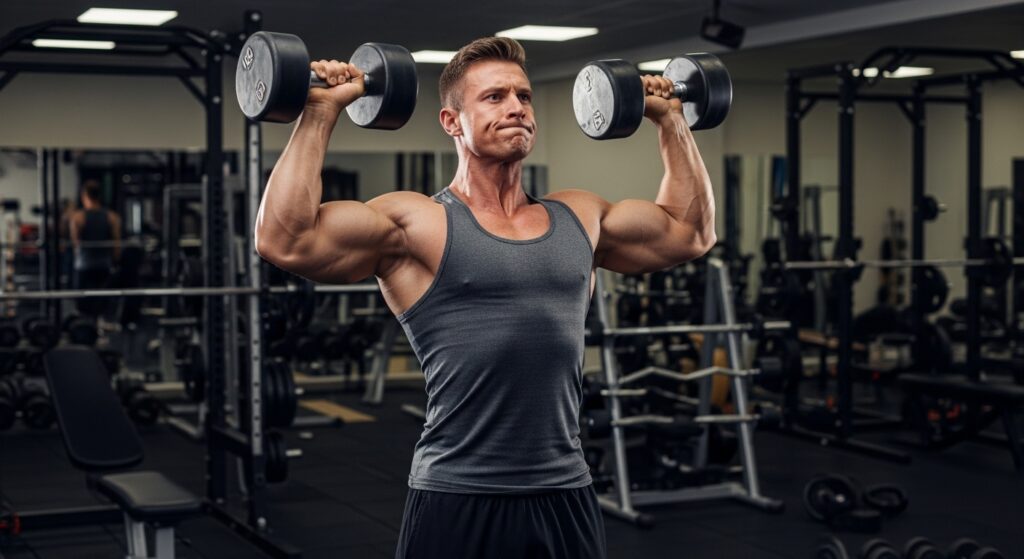
Final Thoughts (kind of)
There’s no magic trick. Just good form, patience, and respect for the lift. The dumbbell shoulder press is simple, but that’s what makes it tricky. The simplicity tempts people to rush. Don’t.
It’s one of those exercises that teaches control, not just muscle. If you get that part right, everything else in your training improves with it.
FAQs
Q1: Is the dumbbell shoulder press better than the barbell version?
For most people, yes. Dumbbells let your shoulders move naturally, lowering injury risk.
Q2: Should I do the shoulder press seated or standing?
Beginners should start out sitting down to get the hang of it. Once you can do it safely, try doing it while standing to work your core.
Q3: How many times a week should I train shoulders?
Twice a week is ideal. Enough for growth without overtraining.
Q4: What’s the difference between military press and shoulder press?
The military press keeps feet together and form strict. The shoulder press allows a natural stance and motion.
Q5: Should I lock out my elbows at the top?
No, Keep a little bend in your knees to protect your joints and keep your shoulders tense.
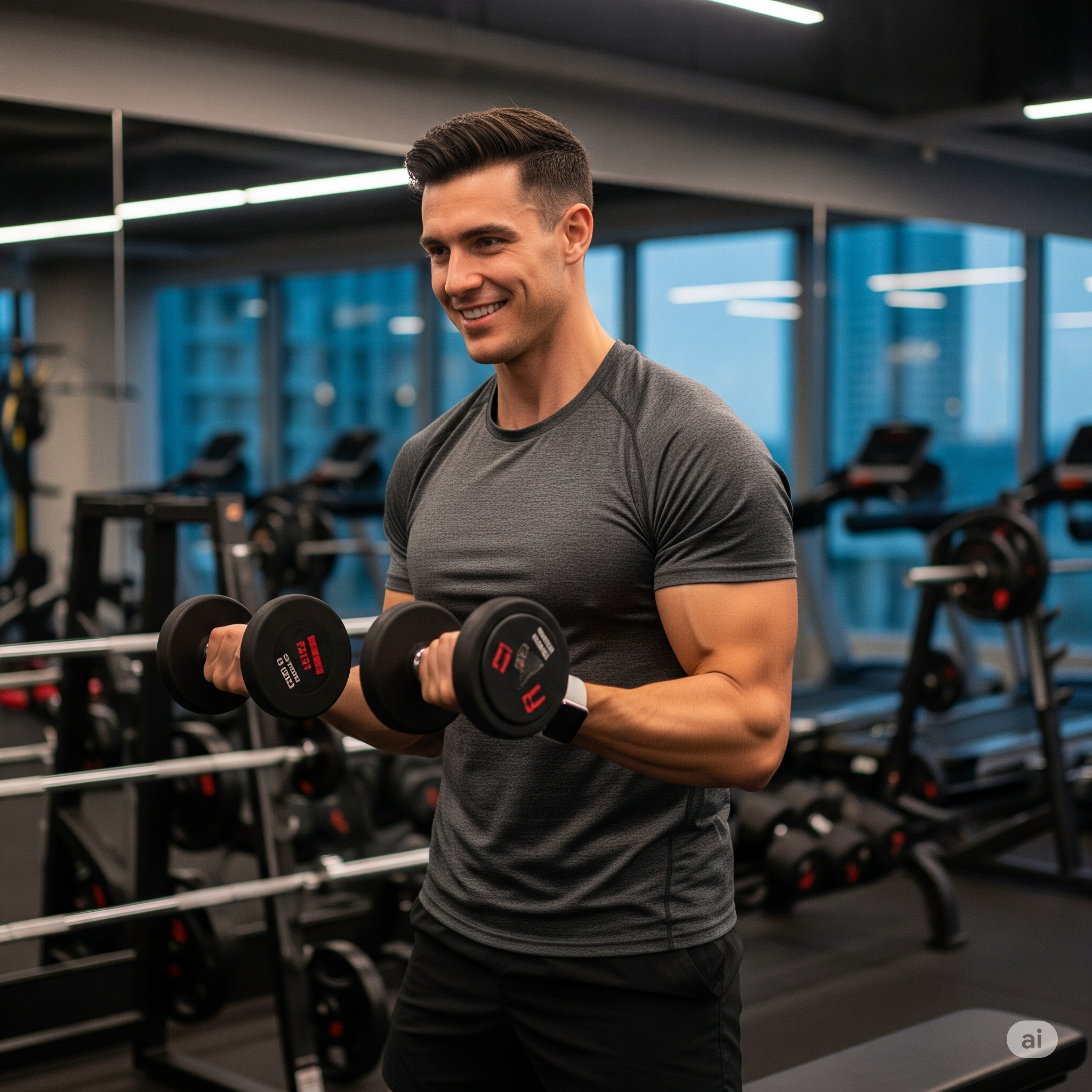
I’m Benjamin Clark, dedicated to elevating your athletic performance. Get targeted fitness plans, injury prevention techniques, sports psychology insights, and the latest in nutrition. Let’s train smarter.

